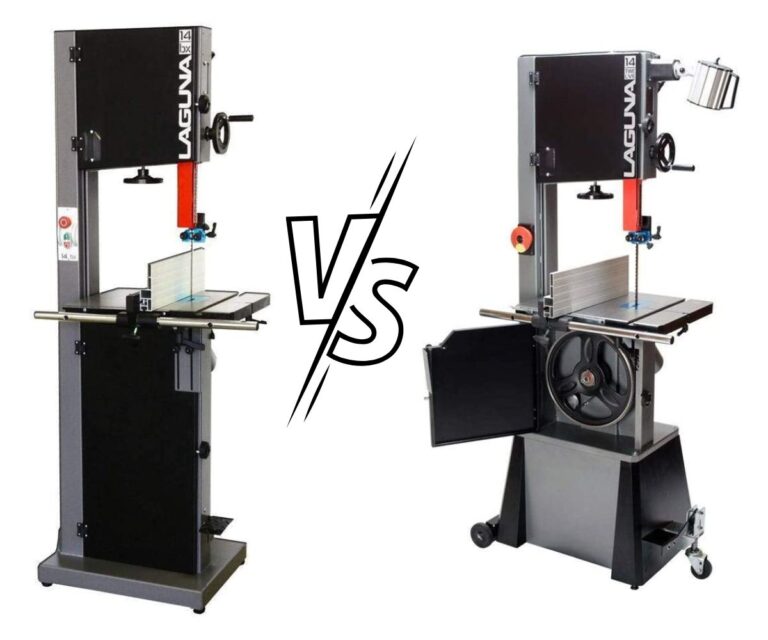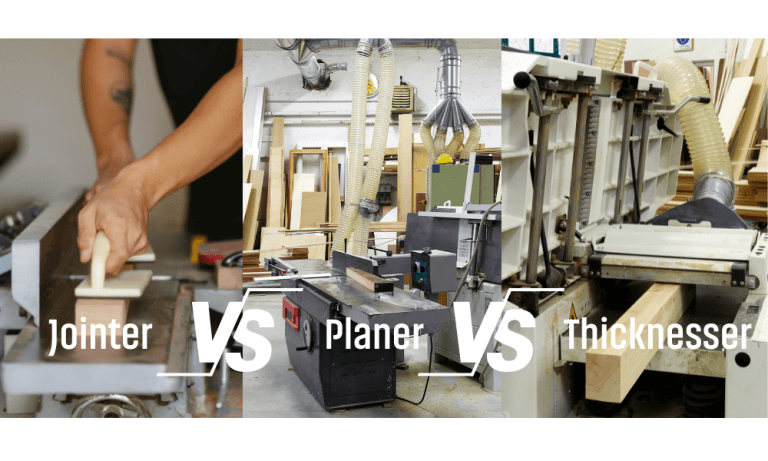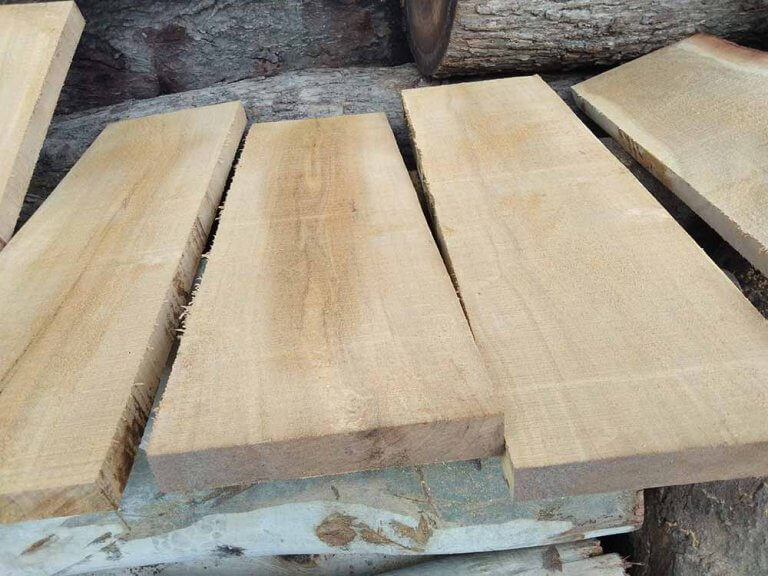Hacksaw vs Coping Saw – Which One Should I Choose?
As an Amazon Associate I earn from qualifying purchases.
Hacksaw and coping saws are both handsaws and have to use physical power to make cuts. Both tools are specialized for cutting different materials and doing different tasks.
The hacksaw is better for cutting metals like aluminum, steel and copper and with its wide, thick and longer blade, it is designed to cut straight cuts. On the other hand, the coping saw is better for cutting wood and with its thin and flexible blade is designed to cut fine curves and intricate cuts.
In this article, I will compare Hacksaw vs Coping Saw and give you a brief description of their strengths and weaknesses so that you can easily understand which one you should choose.
Contents
Comparison Table Between Hacksaw and Coping Saw
| Features | Hacksaw | Coping Saw |
| Frame | D shape | U Shape |
| Blade Width | Wider and thicker | Thin and flexible |
| Cutting Purpose | Metal | Wood |
| Blade teeth Spacing | Father apart | Close |
| Cutting direction | Push strokes | Pull strokes |
| Cutting capability | Straight | Curve and intricate |
| Working Handle | Two hands needed | One hand needed |
Hacksaw vs Coping saw
Hacksaw
A hacksaw is a heavier D-shaped design versatile cutting saw. This saw blade is wider, thicker and longer than the coping saw blade, best for cutting metals, steel, aluminium and copper.
This pistol-type handle saw works better on push strokes and cuts wood, plastic, and metals. This saw is more like a handheld Hand Saw.
A hacksaw can be of four types;
- Full-sized Hacksaw
- Junior Hacksaw
- Mini Hacksaw
- Power Hacksaw
Coping Saw
Coping saw is a lightweight U-shaped design specialized cutting saw. This saw blade is much thin and flexible, best for intricate cuts to have better results and control on cutting wood.
This straight-handle saw works better on the pull strokes and makes very tight cuts. This saw is more like a handheld Scroll Saw.
Similarities and Dissimilarities between Hacksaw and Coping Saw
Design and Size
A hacksaw has a D-shaped frame and has various shapes and sizes, and its throat depth depends on the size of the saw. Whereas a coping saw has a U-shaped frame and has one standard length and its throat depth can be between 4 and 6 inches.
Types of blade
A hacksaw uses a wider and thicker blade. The blade and the blade teeth are much larger and have farther apart blade teeth spacing to make finer straight cuts on both hard and soft materials.
On the other hand, a coping saw uses a thin and flexible blade. The blade and the blade teeth are much smaller but have more teeth per inch and have closer blade teeth spacing to make intricate, curved and detailed cuts.
Cutting Applications
A hacksaw is more versatile with its longer blades and can cut metal materials like rods, pipes and bars, and aluminium, steel and copper; it also cuts wood and plastic.
On the other hand, a coping saw with its thin blades can cut mainly hard and soft thin wood; it also cuts soft plastics and metals.
Handle and Grip
The handle of a coping saw is narrower and simpler, usually made of plastic or wood, and it is straight to the blade to have better grip and delicate control on the saw to make intricate, curved, corner and detailed cuts.
Whereas the handle of a hacksaw is usually made of metal, and for the pistol-type design it has the space for your hand to grip tightly to help you give more force while cutting.
Blade tension
On a hacksaw, the blade is held in place by a pin and clamp and using this, you can adjust the tension on the blade.
On a coping saw, the blade is held in place by a nut and screw and by tightening and loosening the nut, you can adjust the tension on the blade.
Cutting Technique
On a hacksaw, the cutting technique works better in push strokes, which means you have to push forward and keep it away from the body to have effective cutting.
On a coping saw, the cutting technique works better in pull strokes, which means you have to pull back and keep it near to the body to have effective cutting.
Cutting Operation
The coping saws are small and designed to be workable with one hand. You have to keep one hand on the handle and the other hand on the workpiece; you can easily make cuts.
On the other hand, the hacksaw size is larger and heavier, and you need two hands to work: one hand on the handle and the other hand on the front of the hacksaw to have better control while cutting.
Price
Within $30 you will get a quality hacksaw to work on any metal-cutting projects. On the other hand, within $25 you will get a quality coping saw to work on any wood-cutting projects.
Which one should I choose between Hacksaw and Coping Saw?
Both hacksaw and coping saws are specialized to cut selected materials and work; for that reason, depending on your working purpose and project, you have to choose one of them.
The hacksaw uses wider and thicker blades with larger teeth on the blade, which can make the cut better on metal, and the cut you will get better is a straight cut; other cuts won’t be as precious on this saw.
For that, if your project needs to cut metal and want straight cuts, then you should choose Hacksaw.
Whereas the coping saw uses a thin and flexible blade with more teeth on the blade, which makes cutting better on the wood and can make intricate, curved, corner and detailed cuts. Straight and large cuts are not possible on this saw.
For that, if your project needs intricate, curved corners and detailed cuts on wood, then you should choose a coping saw.
But I recommend you to have both the coping saw and hacksaw; as a DIY worker, you may need both saws for your different projects, and both these saws are not much costlier to purchase, so you can keep them in your collection.
Frequently Asked Questions
How deep a coping saw can cut?
A coping saw blade’s maximum size is 12 inches, and the throat depth varies between 4 to 6 inches; for that, you cannot make more deeper than the throat size. The more thicker material you choose to cut, the more difficult it gets and cuts rough. A coping saw is best for cutting up to 1-inch-thick materials.
Can I use a coping saw as a jewelers saw?
A coping saw is intended to cut in thinner materials. On thinner materials, it makes fine and precious cuts. For that, you can use a coping saw as a jeweler’s saw.
However, it is not an ideal alternative for the jeweler’s saw as the coping saw is better for cutting wood and soft materials, and the jeweler’s saw is better for cutting metals. For that, the blades of the coping saw are not very precious and can be damaged easily.
Can a hacksaw cut a 2×4?
Yes, you can cut a 2×4-inch workpiece with a hacksaw. But the cut will be slower and more difficult as the teeth of the hacksaw blade are farther apart, intended to cut metal, and ineffective in thicker wood cutting.
Why can’t I cut straight with a hacksaw?
There can be many reasons you might not be able to cut straight with a hacksaw. 1. The blade can be dull, and the teeth are not straight; 2. You may not tension the blade properly; 3. You may be applying huge pressure while cutting; and 4. You may not secure or grip the blade properly while cutting.
Conclusion
Depending on your working purpose, if you are cutting metal and need a straight cut, then you can take a hacksaw, and if you are cutting wood and need curve and intricate cuts, then you can take a coping saw.
Also, I have compared the other aspects so that you can understand according to your job needs. Thank you.






